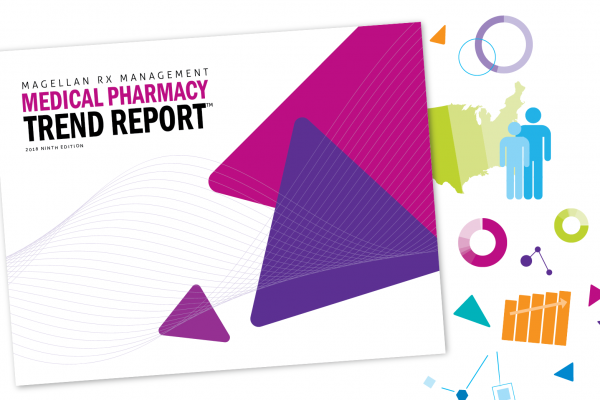Total cost of care is challenging to define. In general, we consider total cost of care to be the total cost of what it takes to treat a population. Is it direct provider fees and hospital fees? What about labs? Medications? Caregiver burden? Time away from work?
When I was in clinical practice—whether internal medicine or psychiatry out-patient clinics— I commonly saw what I called the Ziploc phenomenon—the arrival of a patient carrying a Ziploc bag of prescription drugs. We would spend time going through that bag to help me understand what the patient was actually taking. There would be medications from an ER visit, from an in-patient stay, and those that had been in the medicine cabinet at home. There would be brand names and generics of the same medication or different doses with different instructions. And despite all these medications, some patients invariably had ended up with higher total cost of care due to medication-related issues such as confusion, side-effects, falls, or just from not taking the medication at all because they did not feel better.
Typically, the total cost of care is the sum of in-patient, out-patient, clinic, ancillary, pharmacy, and all other types of direct care services and is defined as a per member per month expenditure. Members continuously enrolled in the health plan for at least a year make up the denominator. Groups who receive an intervention, like case management, are compared against a like-group that does not. The challenges really come when trying to attribute whether the intervention or some other occurrence made the difference in lowering the total cost of care. In order for comparisons to be statistically valid, techniques such as risk adjustment, case-matched controls, trend analyses, and regression analyses are used.
A couple of years ago, I took a role that focused on developing innovative clinical programs for Magellan Rx Management, a pharmacy benefits management company. The CEO challenged me with bringing forward clinical programs that looked different than what typical PBMs offered. I went back to my roots in med/psych and epidemiology. We drew on the interventions more commonly used in health plans. Surely, in the data, we could find the groups of people who needed support, whether in dealing with the Ziploc bag or in other areas at the intersection of medication and well-being. My teams focused on providing the right kinds of interventions to bring better clinical outcomes. As a side effect, we saw improvements in the total cost of care for those members.
Here are two innovative strategies to manage total cost of care
- Having access to data is critical to address the total cost of care.
Unfortunately, it is often the case that PBMs don’t have access to medical claims or other data, including medical pharmacy spend. To hone in on the populations that could benefit from clinical programs, a combination of medical, behavioral, and pharmacy claims is necessary. My team works with a data science company, Arine, to support our work. Arine ingests all sorts of data, including the typical claims data and information from health risk assessments, social determinants factors, and remote monitoring data from devices such as blood pressure monitors. Arine’s technology includes hundreds of algorithms that can help identify individuals at risk for gaps in care, non-adherence, and even heightened suicide risk.
- Identifying at-risk individuals and offering provider academic detailing services
Navigate Whole Health is one of our signature programs directed at improving quality and addressing spend. The original idea behind Navigate Whole Health was to find individuals who were prescribed potentially lethal combinations of opioids and other drugs, high doses of opioids, or poly-pharmacy with behavioral health medications. Using a set of algorithms running through pharmacy, behavioral and medical claims, we can identify individuals who fall into one of the target groups. With Arine’s support, we have expanded the number of algorithms we use to identify at-risk individuals and prescribers.
In fact, provider outreach with academic detailing is the salient intervention. The pharmacists providing the academic detailing have nearly universally found that the providers welcome our input. Our approach has never been threatening or punitive. Rather, the team approaches each case with an attitude of “How can I help you?” Many providers do not know all the medications an individual is taking, including prescriptions written by other providers, medications coming from an in-patient stay, an ER visit, or even the dentist. For one Medicaid client, the team’s work with providers resulted in significant reductions in combinations of opioids and benzodiazepines, reduction in the number of prescribers, and reduction in pharmacy spend, in-patient spend and emergency department utilization during the measurement period. This is one program that I unequivocally believe saves lives. And here is the thing, in doing the right thing, the positive outcome is that we also save total cost of care dollars.
I have a hard time supporting the logic that buckets cost in such a way that could adversely affect overall health outcomes. It is a privilege to bring forward clinical programs that save total cost of care dollars which in turn promote positive health outcomes. What is even better is knowing that these programs positively affect the well-being of those we serve.



